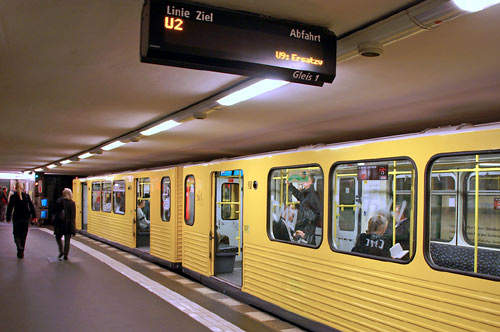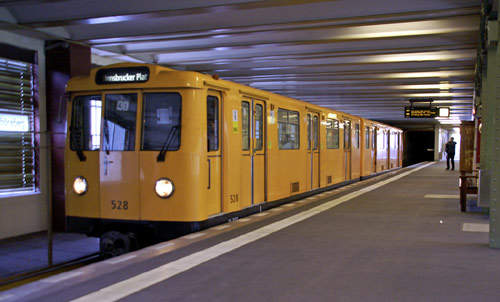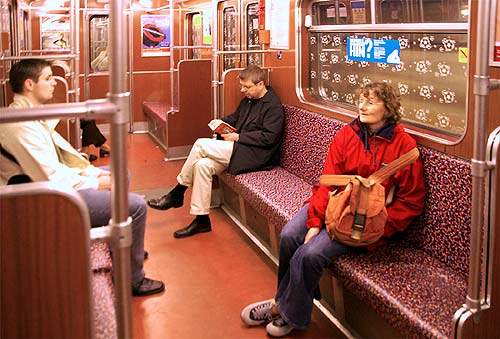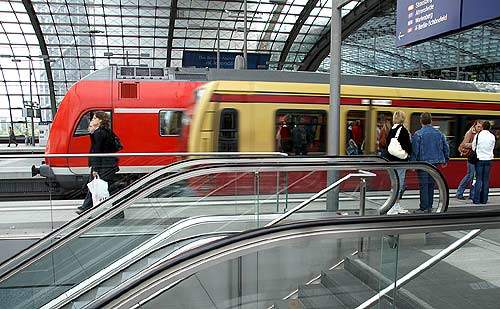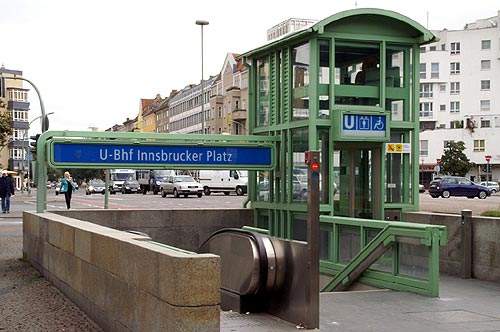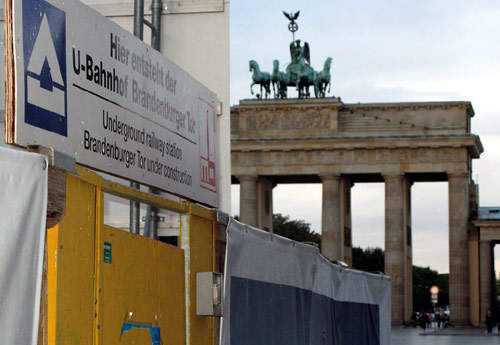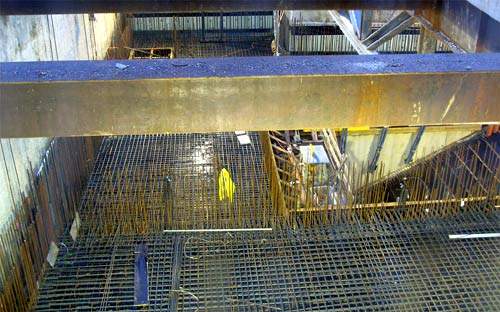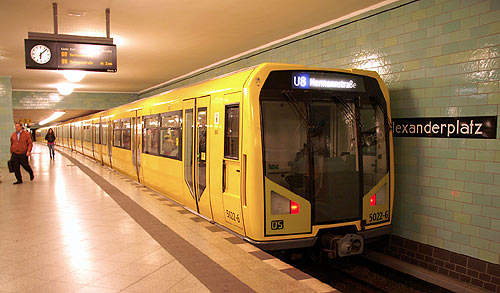The city-state of Berlin has a long-established underground network, with the first trains running in 1902. The system has a complex history of line reorganisation, re-designation and part-completed schemes.
Like its London counterpart, Berlin features abandoned alignments and stations. Following the East/West separation after World War II the network was split in two and experienced a troubled history of fund starvation and traffic control disputes. Since reunification in 1990 it has been returned to a single operation.
The system is operated by Berliner Verkehrsbetriebe (BVG), which also operates local buses and trams, these three operating divisions being represented in a central marketing department. BVG is a partner in the tariff union Verkehrsverbund Berlin-Brandenburgcovering the two lände (Berlin is encircled by Brandenburg), allowing tickets to be used on all modes of public transport.
The project
In broad terms, the Berlin U-Bahn project has been characterised by the need to put right the problems arising from years of under-investment and to recreate a unified network. There has long been competition for funding with the DB subsidiary, S-Bahn Berlin GmbH.
As part of substantial reorganisation of other DB operations, regional services have also provided faster city travel for many. This is notably since completion of the north-south tunnel beneath the Hauptbahnhof, albeit with less frequent services and with far fewer stops around the capital than the U-Bahn.
U-Bahn modernisation is also taking place in the context of Berlin’s financial difficulties, the years since reunification having taken a heavy toll on resources. The city’s near-static population has also had the effect of weakening the argument for funding further system expansion.
Infrastructure
Berlin’s underground network now comprises a 151.7km (94.3-mile) 1,435mm gauge network, with nine lines in operation. They are open 4am to 00:30am, after which two night-lines come into operation, a rare example of 24-hour metro operation.
Unlike the city’s tram system at present fully in the former East, the U-Bahn (Untergrundbahn) network covers the old territories of East and West Berlin. However, due to its history before the now ended political divide, there are two categories of loading gauge that require stock of different dimensions: 2.30m wide x 3.10m high(Kleinprofil) and 2.65m x 3.40m (Grossprofil).
Kleinprofil lines are U1, U2, U3 and U4, while Grossprofil are U5, U6, U7, U8 and U9. East and West Berlin each had both types of lines, effectively creating four networks until reunification. The U-Bahn stations represent part of the city’s atmosphere and identity, being distinctive yet remarkably varied in architecture and configuration. Mostly predating greater appreciation of mobility impairment, many U-Bahn stations have undergone improvements for passenger access.
Rolling stock
In 2000 the first four-car prototype HK trains were delivered by Adtranz (later Bombardier) – three years late – for operation on Kleinprofil lines. They are counterparts of the six-car Grossprofil H trains, built in 1997.
Both types have an aluminium bodyshell, with roof, cabs and underframe fitted as modules. Seating capacity on the HK is 64, while the longer H units can seat 208 passengers. H units are also considerably more powerful at 2,160kW compared with the HK’s 1,020kW power rating.
Each of the loading gauges has older types of rolling stock. Kleinprofile has two-car A3/A3L units built between 1960 and 1971 for West Berlin, type GI/1 units built 1988/9 for East Berlin and type A3L.82 units built in 1982 and 1994. Grossprofil has two-car DL units built 1965–71, type F74 units built 1974–79 and type F84 units built 1984–92, these constructed for use in West Berlin.
In total there are 513 vehicles in operation on Kleinprofil and 866 vehicles on Grossprofil. Following introduction of the H units all type D trains, dating back to 1956, were withdrawn, with many sold to North Korea. The first series of the GI/1 units were all withdrawn and 60 sold to North Korea.
Signalling and communications
Dedicated colour light signals control movements on the tracks. The power system is 750V DC, with power taken from a third rail. The new articulated four and six-car rolling stock is fitted with a heating and ventilation system and a system which reduces contact and swaying between the vehicles for enhanced passenger comfort.
Public address systems and video screens are also fitted for communication with passengers. Berlin U-Bahn is fitted to allow mobile phones of the main networks to work throughout the system.
The future
The most substantial long-term scheme, and the one seemingly most likely to be completed, is the westward extension of U5 from the key public transport hub at Alexanderplatz at the eastern end of the revitalised Berlin-Mitte district. New tramlines on the north side of Alexanderplatz station opened in 2007, adding to the concentration of U-Bahn, DB Regional and S-Bahn services, and the existing tram routes along the south of the complex.
The first stage is the short stub from Pariser Platz near the Brandenburg Gate (Brandenburger Tor) to Berlin Hauptbahnhof, with one intermediate station at the Bundestag (parliament building). Temporarily designated U55, from 2008 it should provide the new central station with its first U-Bahn service. However, in its U55 guise the line will not physically connect with others and will operate as a single-track shuttle, providing S-Bahn interchange at Unter den Linden.
The U55/U5 project is technologically challenging, passing beneath the city’s main architectural treasure house of buildings and through sandy soils with a very high water table.
With plentiful explanatory notices to explain the reasons behind the disruptions, construction works to the east of the Brandenburg Gate have become a prominent feature of Berlin-Mitte. Extension towards Alexanderplatz is expected by 2010, with completion required by 2020.
Set on a site by the former Berlin Wall, at Potsdamer Platz a future station for a planned line U3 (although that designation has now gone elsewhere) is also incorporated into the new station complex. This new line, whose construction now seems less likely, would run along Kurfürstendamm via Potsdamer Platz and Alexanderplatz to Weissensee in the north east.
Having reached Pankow, U2 might eventually be extended to Pankow-Kirche. It has been suggested that Line U7 might be extended from its southern terminus of Rudow to Flughafen Schönefeld, which is being developed as Berlin Brandenburg International (BBI) airport. However, more recent plans to locate a heavy rail through station at BBI may obviate this development.


